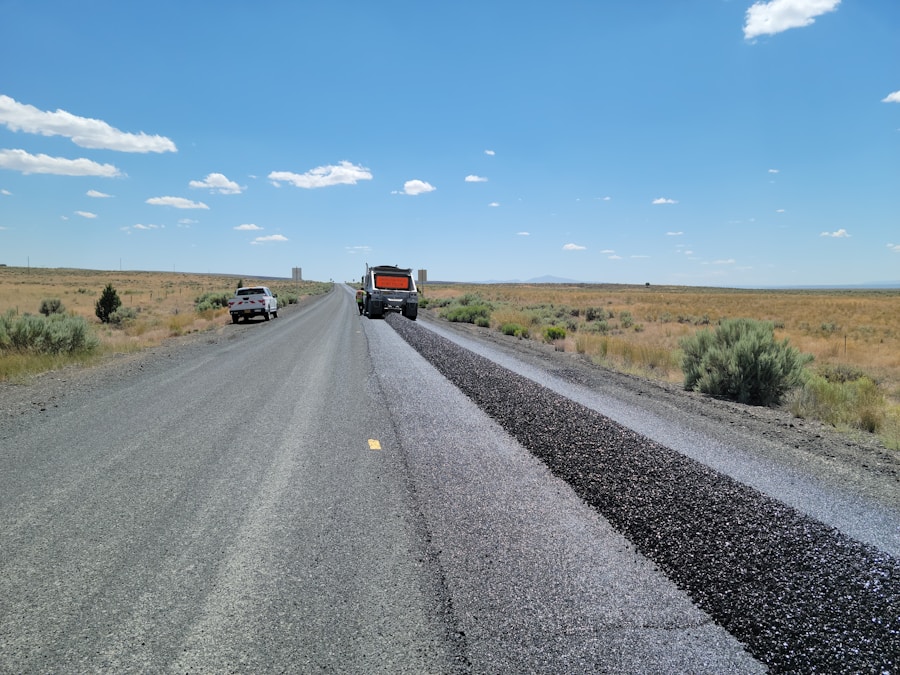When it comes to planning and designing a new asphalt pavement, there are several key factors to consider. First and foremost, it is important to assess the specific needs and requirements of the project. This includes determining the intended use of the pavement, the expected traffic load, and any environmental or geographical considerations. Additionally, it is crucial to consider the existing infrastructure and any potential obstacles or challenges that may need to be addressed during the construction process.
Once the specific needs and requirements have been identified, the next step is to develop a comprehensive design plan. This plan should take into account the desired thickness and composition of the asphalt pavement, as well as any necessary drainage or slope considerations. It is also important to consider the overall layout and design of the pavement, including any necessary markings or signage. Finally, the design plan should include a detailed timeline and budget for the project, as well as any necessary permits or approvals that may be required.
Site Preparation
Before any construction can begin, it is essential to properly prepare the site for the installation of the asphalt pavement. This includes clearing the area of any existing vegetation, debris, or obstacles that may interfere with the construction process. Additionally, it may be necessary to grade or level the site in order to ensure a smooth and even surface for the pavement.
In some cases, it may also be necessary to address any underlying issues such as poor drainage or unstable soil conditions. This may involve installing drainage systems or stabilizing the soil with additional materials. Once the site has been properly prepared, it is important to establish clear boundaries and markings to ensure that the construction process proceeds according to the approved design plan.
Base Installation
The installation of a solid base is crucial to the long-term durability and performance of an asphalt pavement. The base serves as a foundation for the pavement, providing support and stability for the asphalt layer above. There are several different types of base materials that may be used, including crushed stone, gravel, or recycled asphalt. The specific type of base material will depend on the specific needs and requirements of the project, as well as any environmental or geographical considerations.
Once the base material has been selected, it is important to properly install and compact the base to ensure a strong and stable foundation for the pavement. This may involve using heavy machinery such as rollers or compactors to achieve the desired density and compaction of the base material. Additionally, it is important to carefully monitor and test the base material throughout the installation process to ensure that it meets the necessary specifications and requirements.
Asphalt Paving
The actual paving process begins with the delivery and placement of the asphalt mix. The asphalt mix is typically delivered to the site in trucks and then spread and leveled using specialized equipment such as pavers and screeds. It is important to carefully monitor and control the temperature of the asphalt mix during this process in order to ensure proper compaction and adhesion.
Once the asphalt mix has been spread and leveled, it is then compacted using heavy machinery such as rollers or compactors. This helps to achieve the desired density and smoothness of the pavement surface. It is important to carefully monitor and adjust the compaction process in order to achieve the necessary specifications and requirements for the pavement.
Compaction
Proper compaction is essential to the long-term durability and performance of an asphalt pavement. Compaction helps to achieve the desired density and smoothness of the pavement surface, as well as to ensure proper adhesion between the asphalt layers. There are several different methods of compaction that may be used, including static rolling, vibratory rolling, or pneumatic rolling.
It is important to carefully monitor and adjust the compaction process in order to achieve the necessary specifications and requirements for the pavement. This may involve conducting density tests or using specialized equipment such as nuclear gauges to measure the density of the pavement. Additionally, it is important to consider any potential obstacles or challenges that may affect the compaction process, such as tight spaces or uneven surfaces.
Edging and Sealing
Once the asphalt pavement has been properly compacted, it is important to address any necessary edging and sealing. Edging helps to create a clean and defined border for the pavement, while sealing helps to protect the pavement from water damage, UV exposure, and other environmental factors. There are several different methods of edging and sealing that may be used, including hot pour crack sealing, cold pour crack sealing, or seal coating.
It is important to carefully assess the specific needs and requirements of the pavement in order to determine the most appropriate edging and sealing methods. This may involve conducting a thorough inspection of the pavement surface in order to identify any potential cracks or damage that may need to be addressed. Additionally, it is important to carefully follow all manufacturer recommendations and industry best practices when applying edging and sealing materials.
Cleanup and Inspection
Once all construction activities have been completed, it is important to conduct a thorough cleanup and inspection of the pavement. This may involve removing any excess materials or debris from the site, as well as conducting a final inspection of the pavement surface to ensure that it meets all necessary specifications and requirements. Additionally, it may be necessary to conduct any necessary testing or quality control measures in order to verify that the pavement meets all industry standards.
It is also important to consider any necessary maintenance or repair activities that may be required in order to ensure the long-term durability and performance of the pavement. This may involve developing a comprehensive maintenance plan that includes regular inspections, cleaning, and repair activities. Finally, it is important to document all construction activities and inspections in order to maintain a comprehensive record of the project for future reference.

